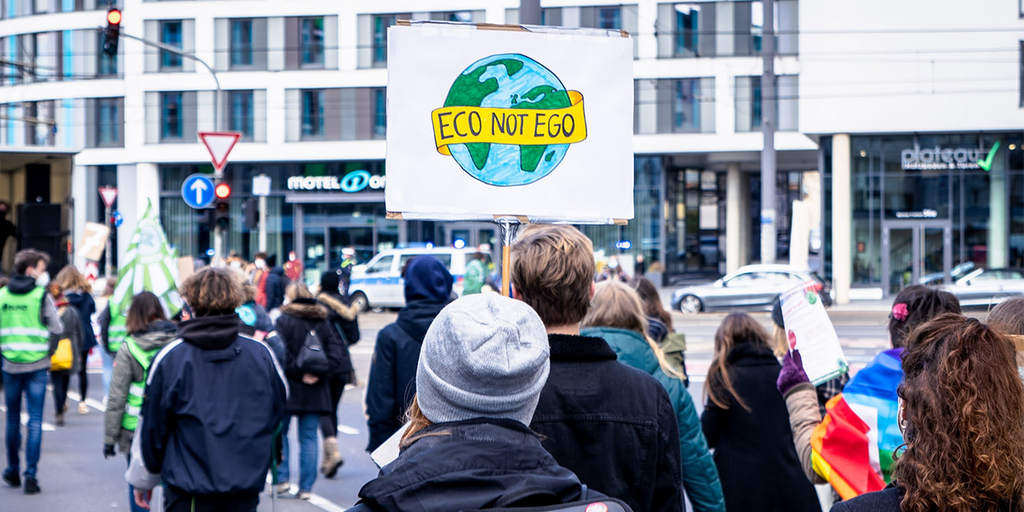5 Easy Tips to Start Working and Living More Sustainably

Image source: Deposit Photos
Climate change and global warming are not topics to consider casually or procrastinate about addressing at some later date. They are our biggest worldwide priorities. Or at least they should be, and the more that time drags on, the more pressing the issues become.
Each decision we make as people, on a planet with finite resources and rising global temperatures, impacts the atmosphere and environment in some way or another. From the energy that we use to power our mobile phones and vehicles to the food we eat, from the ways we heat and cool our homes to the ways we wash our clothes, eco-friendliness and sustainability remain hot topics of conversation (no pun intended).
Being eco-friendly is increasingly important to minimise the damage we inflict on the environment. As more people continue to strive to reduce carbon emissions, even more are trying to find other, sustainable ways they can live and work on a planet on the brink of reaching an ‘irreversible’ climate breakdown. Despite this bleak outlook, every action, however little, can decrease the extent of damage done.
Being Sustainable Should Not Be Seen as Temporary
Currently, global carbon emissions must fall by about half by 2030 if all nations are to meet the internationally agreed target of a 1.5°C rise in temperatures above pre-industrial levels (also known as the Paris Climate Agreement). Most countries are then aiming to achieve net zero carbon status by 2050.
However, many people are still unclear on how they can be helping as individuals, or even whether there is any merit to them making large-scale changes of their own, especially considering influential and powerful oil corporations continue to make record profits while pushing pollution costs onto the rest of us.
Around 40% of carbon emissions come from households, with the average home producing 8.2 tonnes of CO₂ per year. While this sounds daunting, this is an improvement from the 1990 averages, decreasing by about 4.7 tonnes. Fundamentally, much of these emissions come from how we heat and power our homes, as well as our transportation choices and food choices. It’s widely believed that we have to reduce our emissions by 57% by 2030 if we are to reach the next milestone of becoming carbon-neutral.
Making sustainable swaps in energy, transport and diet can make a huge difference. Fundamentally, however, it doesn’t have to be seen as an ‘all or nothing’ change, nor should you view this as a way to live sustainably for a short period, until, say, the milestone is reached, and then revert to older, unsustainable habits.
Making smaller, incremental changes to your lifestyle can combine to make a positive long-term difference. If everybody made such changes, the collective benefits would be even greater. The good news is that many meaningful changes, including those highlighted below are easier to achieve and commit to than you might think. Plus a lot of these will help improve your life and save you money!
1. Go Vegetarian or Vegan or Eat Less Meat
Animal agriculture is responsible for producing more greenhouse gases than the entire world’s collective transportation systems together. It takes approximately 1,850 gallons of water to produce one pound of beef, inflicting significant demand on water supplies. This isn’t even accounting for the ethical considerations associated with intensive factory farming, or the wide amount of health benefits anyone can experience by adopting a vegetarian or vegan lifestyle.
The reality is that eating a mostly or entirely plant-based diet is easier than ever in many areas. Supermarkets and restaurants are bringing more inclusive and tasty vegetarian and vegan options to their shelves and menus, respectively. By reducing your meat intake - even in small amounts to begin with - you will be reducing pressure on land used to grow animal feed. This reduces threats to biodiversity and the earth’s ecosystems, which in turn helps to minimise the effects of climate change.
2. Recycle, Sell or Donate Unwanted Items
Getting rid of any unused or unwanted items can give them a new purpose. You may know friends or family that would benefit from reusing electronics, ornaments, artwork, furniture or numerous other household essentials. Alternatively, used or unwanted items can often be donated to charities that will put them to good use.
If not, they may be recyclable, so it’s worth checking with your local waste management department to ensure your items can be recycled instead of added to the landfill pile. By recycling, items get broken down into materials which can be used in new products, which can lessen the impact of raw material production.
3. Buy Less and Shop Sustainably
The best thing you can buy for the environment and your bank account is nothing. It takes a lot of energy and resources to create new stuff. Sure, we need some new things to lead a good life, but is all really necessary and bringing you happiness?
Beyond that, whopping as sustainably as possible can reduce the impact of widespread industrial waste pollution. Food shopping is a necessity, yet presents a variety of challenges such as single-use plastic in packaging (which isn’t recyclable), the carbon emissions caused by imports throughout the numerous product supply chains, and the amount of food waste. As a consumer, you can do your part by bringing your own containers for food or shopping in sustainable stores that import local, fair trade or organic produce.
Sustainable shopping doesn’t just extend to food, but clothing and electronics as well. The clothing industry is responsible for 10% of global greenhouse gas emissions (1.2 billion tonnes of CO₂ released per year), so buying second-hand clothes from outlets or charity shops is a good way to counteract this. You can repurpose old items and reduce the impact of new production lines, not to mention saving in costs too. As far as electronics go, e-waste continues to be a growing problem, but there are options for reusing old equipment such as laptops, TVs, and even digital cameras, if you are a tech aficionado. If reusing is not feasible, check with your local waste management agency for details on how to properly dispose of electronics and other household hazardous waste.
4. Green Travel Choices
Choosing to walk, cycle or take public transport are greener alternatives to driving. Switching to these alternative methods of transport can decrease the amount of carbon created by vehicles. While public transport vehicles like buses or trains still create emissions, the fact that multiple people can use the same vehicle instead of driving individual cars means that public transportation is much greener.
Walking and cycling also have plenty of health benefits, and more companies are taking advantage of schemes like the Cycle to Work scheme, which can be incentivised. However, depending on where you live, sometimes this may not be feasible. In this case, switching to electric cars is a much more eco-friendly way to reduce emissions, and these cars look set to become more available and affordable in the coming years.
5. Be Smarter With Energy
Becoming more environmentally friendly often begins by looking at your energy usage and conserving as much energy as possible. By draught-proofing your home, and adding double or triple glazing and insulation, you’ll naturally make the home warmer, while not relying so much on central heating. Choose LED light bulbs and high-energy efficiency appliances to keep your electricity consumption to a minimum.
If it’s feasible for you to do so, you may want to consider switching to low-carbon heating systems like heat pumps, which are significantly more energy-saving than standalone gas boilers. There are often government schemes to help with the upfront costs associated with installing heat pumps in your home.
Induction hobs are far more energy-efficient, cooking at faster speeds than gas stoves, which can save more electricity over time as well as avoid causing fumes in the home. Therefore, it’s worth upgrading this appliance if you can.
Furthermore, you may also wish to approach alternative energy suppliers, particularly those that use clean energy. This can also end up saving you money, which is handy in turbulent, financially-testing times when energy prices are soaring.
For an easy and engaging way to track your progress and impact, along with more inspirational ideas on how to improve your life in a sustainable and eco-friendly way, why not download the Earth Hero app? Through action comes hope!

